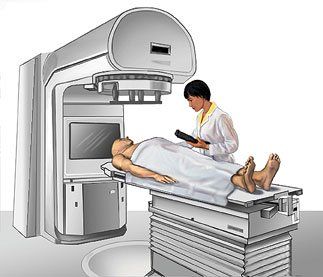Socioeconomic Factors Affecting Use of Radiation Therapy in Hodgkin Lymphoma
Socioeconomic factors are reducing the use of combined-modality treatment for early-stage Hodgkin lymphoma, despite its association with increased survival.
Socioeconomic factors appear to be reducing the use of radiation therapy in early-stage Hodgkin lymphoma

The use of combined-modality treatment (CMT)-chemotherapy and radiation therapy-for early-stage Hodgkin lymphoma has declined in recent years, despite an association with increased survival, according to data from a study published in the Journal of Clinical Oncology.
The study, which examined treatment selection and outcomes among patients with Hodgkin lymphoma, showed that certain socioeconomic factors may be affecting the selection of curative treatments.
“Until 2007, the US National Comprehensive Cancer Network (NCCN) guidelines recommended CMT for all patients with early-stage Hodgkin lymphoma,” Adam J. Olszewski, MD, of Alpert Medical School of Brown University, and colleagues wrote.
However, concerns about late toxicity from radiation, specifically the occurrence of secondary cancers, have led to increased interest in identifying which patients may be cured with chemotherapy alone.
Olszewski and colleagues identified 20,600 patients treated with CMT or chemotherapy alone between 2003 and 2011 from the National Cancer Data Base (NCDB). They found that 49.5% of patients received CMT, and that the percentage decreased from, 59.4% in 2003 to 45.2% in 2011. The decline in use of CMT was greatest among women aged 30 years or younger.
Clinical characteristics associated with decreased CMT use were younger age, B symptoms, subdiaphragmatic tumors or lymphocyte-depleted histology. Socioeconomic factors identified as being significantly associated with decreased CMT use were distance to facility, sex, black race, income or education, and type of insurance.
Adjusting for guarantee-time and indication biases, the researchers found that CMT was associated with a significantly better overall survival and relative survival compared with treatment with chemotherapy alone.
“We found that after adjustment for the type of health insurance, other socioeconomic factors including race were no longer significantly associated with excess mortality,” the researchers wrote. “The insurance-related differences in CMT utilization are thus concerning in the context of survival disparities.”
The researchers acknowledged that their study is limited by its retrospective design and the limited data available through the NCDB.
“We could not assess the quality of treatment responses or their effect on CMT utilization or compare Hodgkin lymphoma recurrences and progression-free survival,” they wrote.
Olszewski and colleagues recommended further research be done to compare relative risks of modern CMT using involved-field techniques with extended anthracycline-based chemotherapy, in addition to work to eliminate socioeconomic disparities in treatment delivery and outcomes.